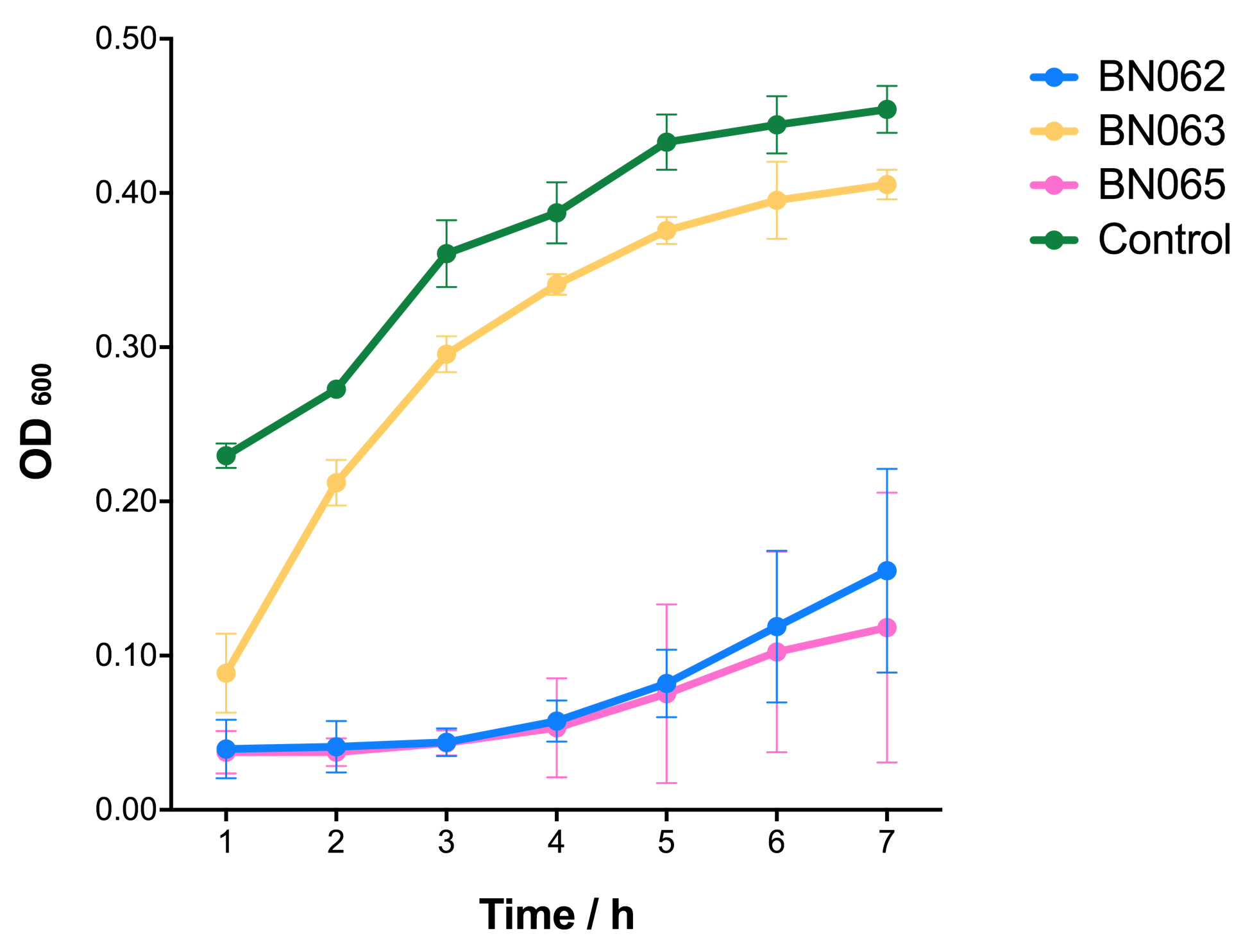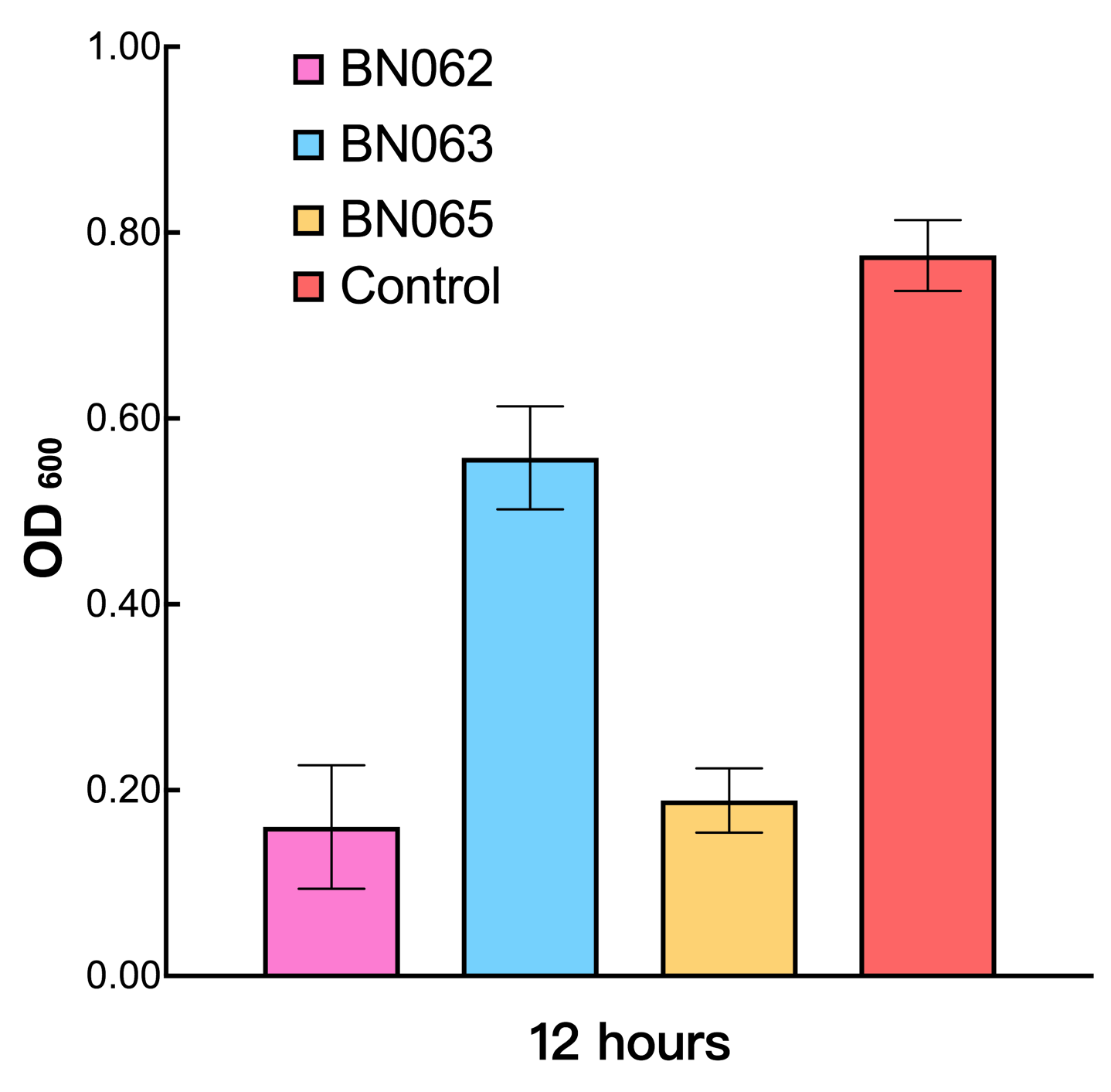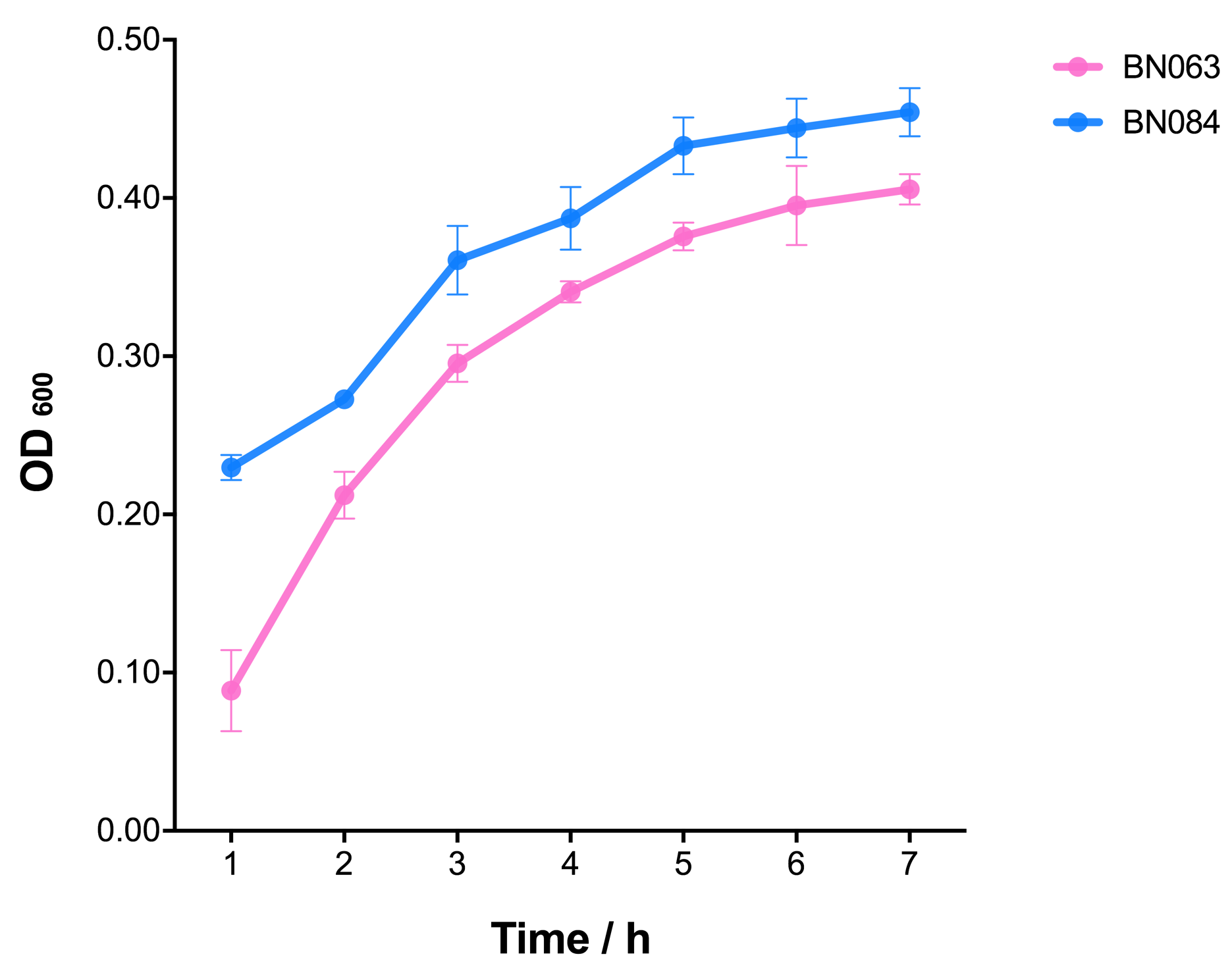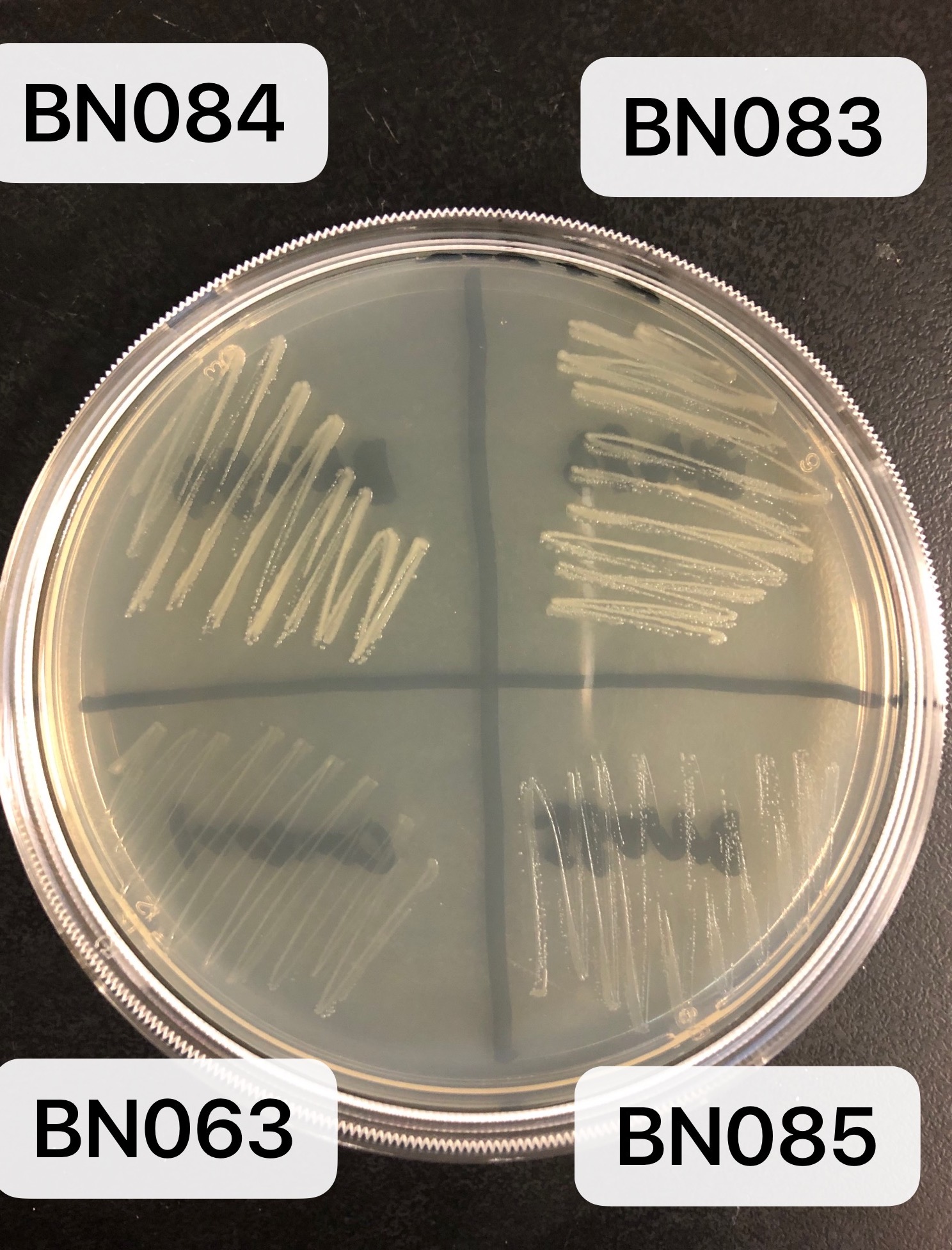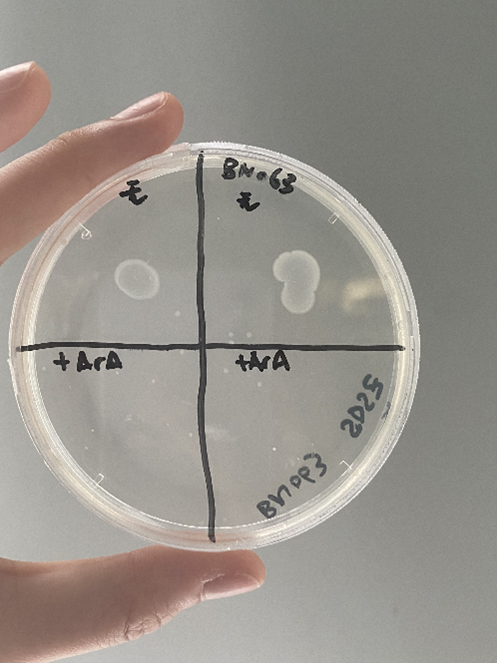Difference between revisions of "Part:BBa K3202053"
| Line 75: | Line 75: | ||
[[File:T--BHSF_ND--Toxin Leakage experiment 5.jpeg|250px|thumb|center|alt= Colony Growth |Figure 5:Colony growth for three types of toxin-bistable-system after 20 hours]] | [[File:T--BHSF_ND--Toxin Leakage experiment 5.jpeg|250px|thumb|center|alt= Colony Growth |Figure 5:Colony growth for three types of toxin-bistable-system after 20 hours]] | ||
| + | |||
| + | |||
| + | |||
| + | |||
| + | === IV.Improvement by SDSZ_China === | ||
| + | |||
| + | SDSZ_China improved this part by doing another set of experiment(designed the kill switch part as below). | ||
| + | [[File:T--SDSZ_China--Kid2.png|400px|thumb|center|Fig.1]] | ||
| + | <br><br> | ||
| + | After transforming the plasmids into competent BL21 cells, we inoculated the cells in eight groups, including four in liquid medium and the other four in solid medium. The results are shown in the figures below. Arabinose was added in experimental groups. We tested and calculated the mean OD value of four liquid groups. Below are some new experimental data as well as qualitative and quantitative result: | ||
| + | [[File:T--SDSZ_China--Kid5.png|300px|thumb|center|Fig.2]] | ||
| + | As shown in Fig.1-2, in the upper-left area of the medium, normal E.coli without the transformation of the plasmids could grow normally; in the upper-right area, transformed cells could grow normally without the presence of the Arabinose; in the bottom area, the cells were killed in the Arabinose-contained environment. Fig.1-3 shows that the OD value of liquid medium after adding Arabinose is lower than that of medium without Arabinose. These results indicate that this biobrick performed as effectively as expected. | ||
| + | [[File:T--SDSZ_China--Kid4.png|400px|thumb|center|Fig.3]] | ||
| + | <!-- --> | ||
| + | |||
| + | |||
| + | |||
| + | |||
| + | |||
<!-- Add more about the biology of this part here | <!-- Add more about the biology of this part here | ||
Revision as of 02:29, 22 October 2021
AraC-Pc-pBAD-Kid
This part is designed mainly for the characterization of the toxin Kid.
In our study, we ought to ensure the toxin encoded within the bistable system is efficient for killing any bacteria. Therefore, presenting this composite part with BBa_K3202052 and BBa_K3202054, we provide a tool pack aiming different kinds of bacteria.
This part is later a negative control group for our study.
See more about toxin module below.
Toxin Module
I.Background
Toxin proteins are good materials for detecting leakage of inducible promoters. Because sometimes a molecule of translated toxin, it can have a great impact on cell growth. To further test the leakage effect, we incorporate toxin protein—Kid, ParE and Colicin—into the plasmid. ParE toxins are DNA gyrase (Gyr) inhibitors.Toxin Kid which closely resembles the DNA gyrase-inhibitory toxin protein CcdB from E. coli can inhibit DNA replication. Toxin Colicin binds to outer membrane receptors, using them to translocate to the cytoplasm or cytoplasmic membrane, where they exert their cytotoxic effect, including depolarization of the cytoplasmic membrane, DNase activity, RNase activity, or inhibition of murein synthesis.
II.Design
We chose pBAD as the inducible promoter in this experiment for it has lower basal leakage level than Xyls. We set all together four different group including one control. We measured OD 600 value which indicate cell growth for the following seven hours.
III.Experiment & Results
At the first level of experiment we incorporate toxins with pBAD & AraC. At the absence of inducer, all of the three toxin experiment group demonstrated a lower OD value with more significant low OD value in BN062/Contains BBa_K3202052 (with toxin ParE) and BN065/BBa_K3202054 (with toxin Colicin) than control. Cell growth was affected in each experimental group. When measured after 12 hours, the trend is more obvious with BN065/BBa_K3202054 and BN062/Contains BBa_K3202052 demonstrate a OD value of 0.1891 and 0.1604 respectively. Whereas control group is 0.7755. The result suggests that even without inducer, pBAD system have noticeable leakage when incorporated with toxins which may affected cell growth in some cases.
We want to test our bi-stable system to see wether it can really prevent leakage. We construct three toxin-bistable-system plasmid.When compared to BN063(Kid&pBAD) during a seven hours period, we can observe a significant improvement in cell growth in BN084 as OD 600 value have is higher. This suggests that our system has a significant role in inhibiting the expression of toxin proteins. Later, when we inoculated the colonies, we found that the toxin protein integrated into the bistable state was significantly inhibited in expression. Cell growth was significantly better than BN063.
IV.Improvement by SDSZ_China
SDSZ_China improved this part by doing another set of experiment(designed the kill switch part as below).
After transforming the plasmids into competent BL21 cells, we inoculated the cells in eight groups, including four in liquid medium and the other four in solid medium. The results are shown in the figures below. Arabinose was added in experimental groups. We tested and calculated the mean OD value of four liquid groups. Below are some new experimental data as well as qualitative and quantitative result:
As shown in Fig.1-2, in the upper-left area of the medium, normal E.coli without the transformation of the plasmids could grow normally; in the upper-right area, transformed cells could grow normally without the presence of the Arabinose; in the bottom area, the cells were killed in the Arabinose-contained environment. Fig.1-3 shows that the OD value of liquid medium after adding Arabinose is lower than that of medium without Arabinose. These results indicate that this biobrick performed as effectively as expected.
Sequence and Features
- 10COMPATIBLE WITH RFC[10]
- 12COMPATIBLE WITH RFC[12]
- 21INCOMPATIBLE WITH RFC[21]Illegal BamHI site found at 1144
- 23COMPATIBLE WITH RFC[23]
- 25INCOMPATIBLE WITH RFC[25]Illegal AgeI site found at 979
- 1000INCOMPATIBLE WITH RFC[1000]Illegal SapI site found at 961

